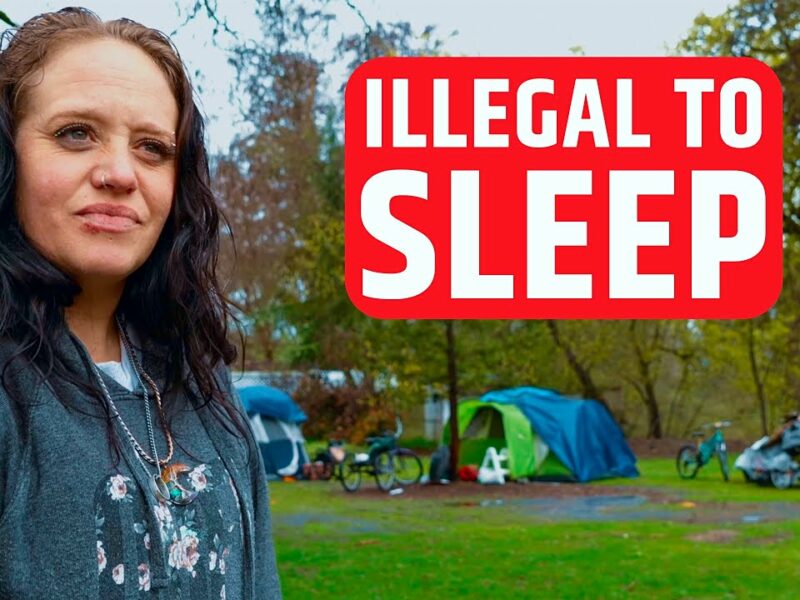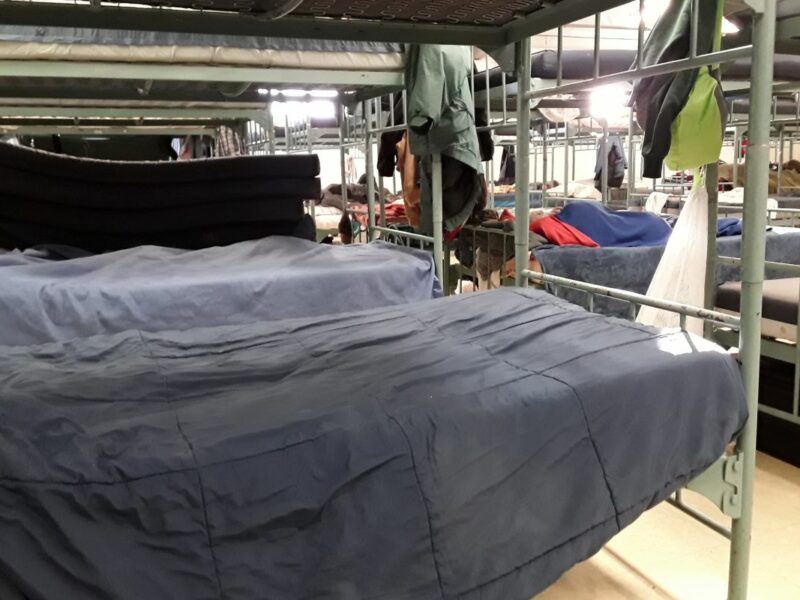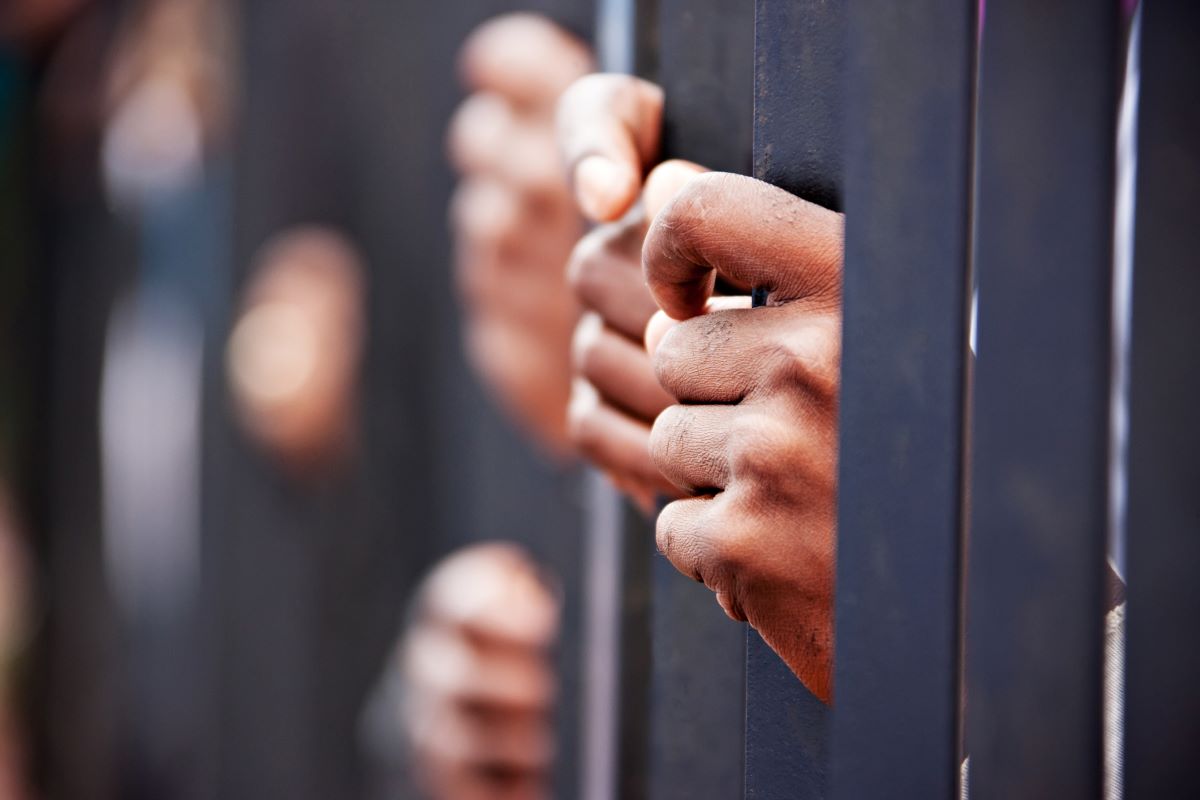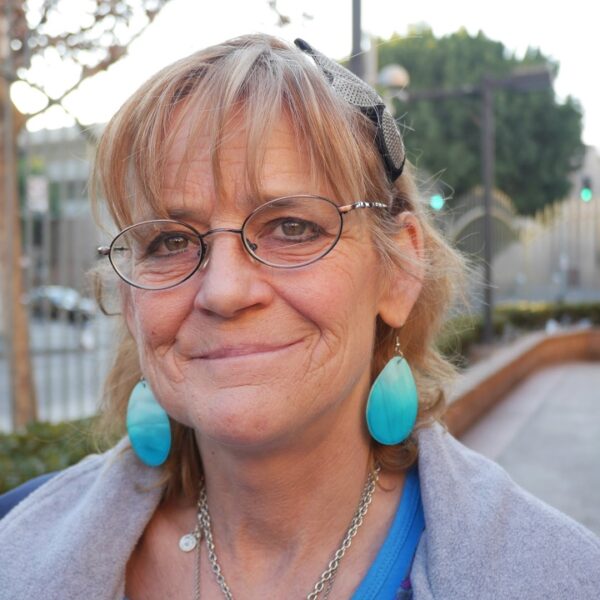Speckled love children of the lithium generation
Suffer symptoms of a system with unjust incarceration
We search for realness but settle for imitation
Processed foods and penny wages, modern metal plantations
Once I had a friend, a prison guard, and in the late ’90s, he casually mentioned that the system was a scam.
“The same number of people that go out go in,” he explained. “Never more, never less. So calculated. What are the odds that could happen every year by accident?”
It was a valid point and one that intellectuals would wait several decades to officially make.
Today, we recognize this circular oppression as part of the prison industrial complex.
There’s no denying the impact privatizing prisons has had. Since the prospect of for-profit prisons became a reality, the United States of America quickly became notorious for this kind of institutionalized exploitation. Today, the USA is home to only 5% of the global population, yet US inmates represent 20% of the world’s prison population.
This all began quite inconspicuously. The privatization of prisons trickled in through the 19th century, unbeknownst to most. By the late 1990s, however, after 140 years of quiet privatization growth, incarcerating large portions of the population had become a booming business. During that time, more than 31 million Americans were placed behind bars for drug-related offenses alone.
The so-called “War on Drugs” and other mass incarceration movements took hold, leaving the nation devastated and in chains. At the same time, prison laborers pumped out a jaw-dropping $11 billion of profits per year for corporate entities. Even those who did not directly participate were adversely affected by the widespread wealth inequality the system supported.
Liliana Segura, a reporter for The Nation, explained it this way:
“When corporations seek to profit from prisons, it creates a powerful financial incentive, not just to push for policies that fuel mass incarceration but to cut corners in the services they’ve been hired to provide.”
A New Kind of Industrial Complex is Currently Underway – You May Recognize it as Homelessness
The world has grown keen on the corruption that is mass incarceration. Movements to dismantle the prison industrial complex have gained traction, particularly among youth.
But even if we can somehow disassemble the current prison model that has wreaked havoc on the working class and lined the pockets of the elite 1%, another industrial complex is taking hold. It is equally profitable and equally cruel. You may recognize it as homelessness.
The Homeless Industrial Complex and the Prison Industrial Complex: Two Sides of the Same Trick Coin
Homelessness and prison are eerily similar.
Approximately 3.5 million young people between 18 and 25 endure the harrowing state of homelessness each year, not to mention millions more children, adults between 25 and 55, and senior citizens. While comparable, this number exceeds even the prison industrial complex, which houses about 2.3 million Americans per year.
The homeless industrial complex garners less attention because the media presents the data as a snapshot of a single night of homelessness instead of showing figures for the entire year.
Also, much like the PIC, the homeless industrial complex uses talking points about addiction and mental illness to justify forcing people into abhorrent conditions. Once outside in the cold and stigmatized by the media, the homeless person experiences an isolated state akin to solitary confinement. This is a prison without any walls, a prison of the future if things don’t change.
Like Incarceration, Homelessness is Profitable for People in Positions of Power
It would be bad enough to learn that millions of people are made homeless each year and forced into stigmatized social isolation. But adding to this horror is the fact that homelessness is becoming increasingly more profitable thanks to the Cicero Institute and other organizations. These think tanks encourage criminalizing homelessness and forcing people living unsheltered into sanctioned encampments against their will.
For perspective, the current sanctioned encampment model features flammable shacks roughly the size of prison cells where people are forced to live with roommates and without bathrooms. They say they are moving unsanctioned people indoors, which has a ring of very misleading compassion.
They are really taking the current indoor prison model and moving it outside. The push for criminalization and sanctioned encampments will undoubtedly equal cheaper labor and poverty profiteering. In the meantime, housing prices now outpace wages by a whopping 4x ratio. And the shortage of affordable homes stands firm at over 7 million.
Still think it’s all just one big coincidence that homelessness is a hopeless problem too difficult to solve? Consider this.
The Same Number of People that Go Out Go In
As my friend helpfully pointed out so many decades ago, when it comes to prisons, roughly the same number of inmates enter as those that are released. Likewise, when it comes to homelessness, the same number of people who exit enter back in.
This vicious cycle happens in a wide variety of ways but always with the same result, which is to say the same amount of homelessness as before.
For example, when an encampment is cleared, most unsheltered individuals wind up back on the streets in days. Some are taken to temporary shelters. Some are hauled off to jail. In the end, though, it’s all a big show. Most, if not all of those encampment residents will be cycled right back into unsheltered homelessness. This time they will be in an even more precarious position due to loss of possessions, fines, court fees, and arrest records.
Another example of this in-out cycle is affordable housing. We have been in a deficit of millions of affordable homes for decades. Yet, according to Curbed, constructing new high-rises can lead to less housing. And the less housing there is to go into… well, you guessed it, the more people go out onto the streets.
Here’s where it gets deep. You see, conditions within the United States often change, but the number of people enduring homelessness remains pretty much the same, not for decades, but for centuries.
The Number of Homeless People in the United States Has Barely Budged for Hundreds of Years
Regardless of how far we come or how low we sink as a nation, homelessness is constant, steady, and unwavering. Indeed, if you were to view a graph of homelessness dating back hundreds of years, it would instantly become clear that no matter the budget, the number has barely budged. The same number of people that go out go in, a prison of our own making.
The homeless funding goes up, and the people are still living outside. The homeless funding goes down, and the people are still living outside. The housing market teeters this way and that way, favoring buyers, then sellers, then buyers again, and the people are still living outside.
The police officers arrive in combat boots and enforce anti-camping legislation, and after the slew of arrests and citations, the people are still living outside.
Inflation skyrockets and people are still living outside. Wages remain stagnant, and people are still living outside. Wars start and end, and regardless of battle lines, people are still living outside.
The economy booms, and millionaires become billionaires. Elon Musk flies his ruby-red Roadster through the spiraling cosmos of outer space, and the rich get richer. The phones get smarter, and the city sidewalks get hotter by 15 or 20 degrees to make way for the towering, amenity-laden skyscrapers with stretching views and stationary peloton bicycles, and people are still living outside.
This is not an accident but a design. And much like what happened with prison privatization, as people in positions of power find new ways to profit from poverty, homelessness, and pain, there will undoubtedly be a financial incentive to create and criminalize more homelessness.
Homelessness is on the verge of becoming the new system of unjust incarceration. We must act now to prevent it.
Please Talk to Your Legislators Today
Homelessness is on the verge of becoming the new system of unjust incarceration. As a testament to this statement, legislators are already incentivized to push policies perpetuating the cycle. They are already seeking to cut corners to the services they are supposed to provide to help people out of homelessness.
Imagine how the world might look today if people spoke up about mass incarceration in 1852 when there was only one private prison in the country. This is only the beginning of capitalizing on the prison-like state of homelessness. Talk to your legislators about ending the homeless industrial complex today, for a prison without walls is just as harmful.












